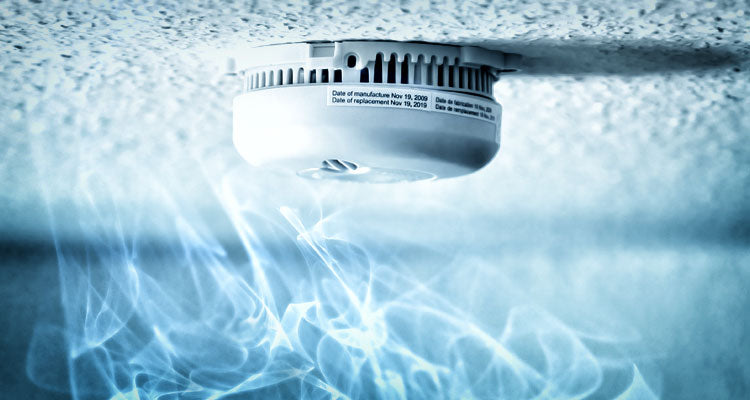It’s a question that’s been rolling around the vaping community for ages now: What are the chances that your e-cigarette will trigger the alarm on a smoke detector? While we’d love to give you a definitive yay or nay, the real answer is a little more complicated — and ultimately results in a resounding maybe.
E-Cigarettes and Smoke Detectors: The Science Behind the Smoke

Let’s start unpacking this entire scenario by looking at the actual mechanics of a smoke detector. Depending on where you live, you’ll generally run across two types of alarm technology: ionization and photoelectric.
Ionization detectors work by using a tiny amount of radiation to create an ionic current between two electrodes. When smoke enters the area, it soaks up the alpha particles, disrupts the current and sets off the alarm. This type of detector is most common in households — it’s usually the least expensive choice — and it’s especially sensitive to hot, fast and raging fires.
Photoelectric detectors, on the other hand, forgo the radioactive material for a light beam. Once smoke enters the optical area, it interrupts the beam, effectively scattering the light and sending bits of it toward an alarm-triggering sensor. This option tends to detect slower fires, which makes it more sensitive overall. It’s also possible to find detectors that use a combination of these technologies, and most fire-safety experts recommend using both in a home or office to cover all of the bases.
What About Vapor from E-Cigarettes?

Now that we’ve dug into the specific mechanisms of smoke detection, the key is to understand whether these technologies are able to read e-cigarette vapor in the same way that they read standard smoke. On the surface, the answer seems incredibly simple. We’re looking at two totally different physical compositions, so it should follow that e-cigarette vapor won’t create the same reaction as smoke from a fire or tobacco-based cigarette. Right? Well, sort of.
Related: The Differences Between Smoke and Vapor
While it’s true that ionization detectors sometimes respond to smoke alone, some reports indicate that e-cigarette vapor can interrupt the current in much the same way due to the sudden change in air density. Similarly, photoelectric alarms can’t detect what’s causing the light to scatter: only that it has. If the vapor from your e-cigarette travels into the optical chamber and breaks the beam, it’ll trigger the alarm. Short of disabling the detector entirely — which we don’t recommend — there’s no way to keep the alarm from reading what it reads. There’s also no way to know whether the alarm will pick up the vapor; some people have never experienced a problem, but others swear that even the smallest amount of faux smoke can send the detectors into a tailspin.
Related: Can I Use My E-Cig on a Airplane?
How to Handle the Uncertainty
The easy answer is to simply cut the risk factor and avoid vaping in close quarters with a smoke detector, especially if you’re breaking rules to do so. That said, some locations that are completely fine with vaping — homes or small apartment buildings to name two — might have super-sensitive detectors mounted in a place that’s conducive to false alarms. The solution in this instance is two-fold. First of all, try to vape only in an area where the airflow is particularly good. Secondly, never blow vapor directly at the detector or even anywhere near it. E-Cigarette vapor particles disperse more quickly than smoke, but it’s better to be safe than sorry.
Related: Where Can I Vape Indoors?






